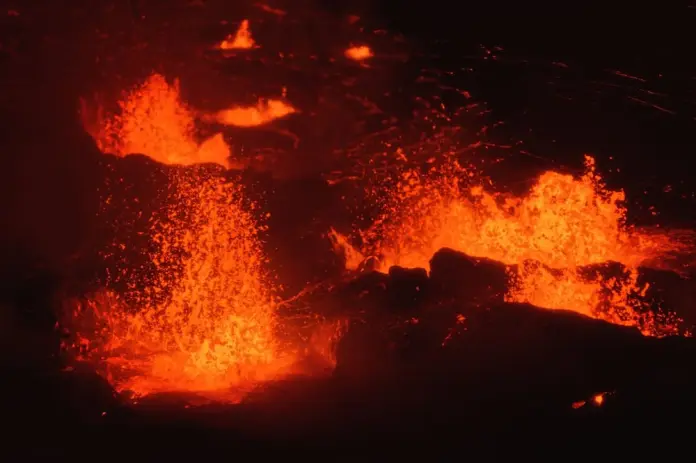The ground shakes. Steam rises. Then, a bright glow emerges from Kilauea’s crater. Another eruption is underway. For Hawaiians, it’s nothing new—Kilauea is one of the most active volcanoes on Earth. But every eruption tells its own story.
This one began on February 11, confirmed by the U.S. Geological Survey (USGS). Lava has started to pool inside the volcano’s summit, and scientists are keeping a close eye on whether it stays there—or moves toward populated areas.
A Volcano That Won’t Stay Quiet
Kilauea erupts often. Some eruptions last days, others months. The 2018 event was one of the most destructive in recent history, swallowing neighborhoods in rivers of molten rock. This time, it’s different. So far, lava remains inside the Halemaʻumaʻu Crater, posing no immediate risk to communities.
Still, no one takes Kilauea lightly. Even when lava isn’t flowing downhill, eruptions come with other dangers.
What Are the Risks?
Right now, the main concerns include:
- Volcanic gases – Sulfur dioxide is rising from the crater, creating vog (volcanic smog) that can impact air quality.
- Seismic activity – Small earthquakes often accompany eruptions, sometimes shifting the ground unexpectedly.
- Ash and debris – If pressure builds, small explosions could send ash into the sky, affecting flights and visibility.
Authorities are monitoring everything closely. For now, no evacuations have been ordered, but that could change if lava starts to move.
Is This Eruption Different?
Kilauea has erupted countless times, but no two eruptions are identical. Scientists use seismic data, gas readings, and satellite imagery to track what’s happening beneath the surface. The question is: will this be another short-lived event, or could it evolve into something larger?
At the moment, there are no signs of lava escaping the crater. That’s good news. But history shows that Kilauea doesn’t always play by the rules.
What’s Next?
For now, the eruption remains contained. Flights in and out of Hawaii haven’t been affected, and most tourist areas remain open. In fact, visitors are already heading to Hawai‘i Volcanoes National Park for a glimpse of the glowing lava at night.
Volcanologists will keep watching. If magma pressure increases, new vents could open, shifting the course of the eruption. If not, this might be one of Kilauea’s quieter moments. Only time will tell.


